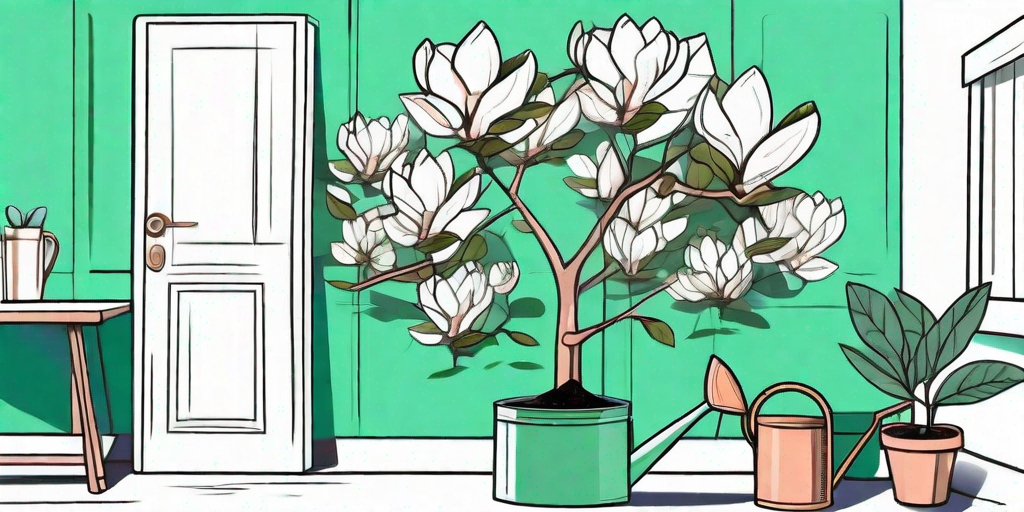
Welcome to the world of magnolias, where the flowers are big, the fragrance is intoxicating, and the care is... well, let's just say it's not rocket science, but it's not exactly a walk in the park either. But don't worry, we've got you covered. In this guide, you'll learn all the secrets to growing a magnificent magnolia that will make your neighbors green with envy.
The Basics of Magnolia Tree Care
Before we dive into the nitty-gritty of magnolia tree care, let's start with the basics. Magnolias are a diverse group of trees and shrubs, with over 200 species worldwide. They're known for their large, fragrant flowers and glossy, evergreen leaves. But enough about their good looks, let's talk about what they need to thrive.
Firstly, magnolias love the sun. They're like that friend who always wants to sit outside at the café, even in the middle of winter. So, make sure your magnolia gets at least six hours of direct sunlight each day. Secondly, they prefer well-drained soil. They're not big fans of "wet feet", so avoid planting them in areas where water tends to pool. Lastly, they're not very picky about soil pH, but they do best in slightly acidic soil.
Choosing the Right Magnolia
With so many species to choose from, picking the right magnolia for your garden can feel like trying to find a needle in a haystack. But don't fret, we've got some tips to help you make the right choice.
Firstly, consider the size of your garden. Some magnolias, like the Southern magnolia, can grow up to 80 feet tall, while others, like the star magnolia, are more compact and only reach about 15 feet in height. Secondly, think about when you want your magnolia to bloom. Some species bloom in early spring, while others bloom in summer or fall. Lastly, consider the flower color. Magnolias come in a range of colors, from pure white to pink, purple, and even yellow.
Planting Your Magnolia
Now that you've chosen your magnolia, it's time to get your hands dirty. Planting a magnolia isn't exactly like planting a daisy, but with a little elbow grease and a lot of love, you'll have your magnolia in the ground in no time.
Firstly, dig a hole that's twice as wide and just as deep as the root ball of your magnolia. This gives the roots plenty of room to spread out and establish themselves. Secondly, place your magnolia in the hole, making sure the top of the root ball is level with the ground. Lastly, backfill the hole with soil, firm it gently around the base of the tree, and water thoroughly.
Watering and Fertilizing Your Magnolia
Watering and fertilizing your magnolia is like feeding and watering a pet. You don't want to overdo it, but you also don't want to neglect it. So, how much is enough?
As a general rule, magnolias need about 1 inch of water per week, including rainfall. If the soil feels dry 2 inches below the surface, it's time to water. As for fertilizing, a slow-release, balanced fertilizer applied in early spring should do the trick. Just be sure to follow the package instructions to avoid over-fertilizing.
Pruning Your Magnolia
Pruning your magnolia is like giving it a haircut. It's not absolutely necessary, but it can help keep your tree looking its best. Plus, it's a great way to show off your gardening skills to your neighbors.
Firstly, know when to prune. The best time to prune a magnolia is in late winter or early spring, before the new growth starts. Secondly, know what to prune. Remove any dead or diseased branches, as well as any branches that are crossing or rubbing against each other. Lastly, know how to prune. Make your cuts just outside the branch collar, and avoid leaving stubs.
Dealing with Pests and Diseases
Like all plants, magnolias can be affected by pests and diseases. But don't worry, with a little vigilance and the right treatment, your magnolia will be back to its blooming best in no time.
Common pests of magnolias include scale insects, aphids, and magnolia weevils. If you notice any of these critters on your tree, a horticultural oil or insecticidal soap should do the trick. As for diseases, magnolias can be affected by fungal diseases like leaf spot and powdery mildew. If you notice any unusual spots or growths on your tree, a fungicide may be necessary.
Frequently Asked Questions
Why isn't my magnolia blooming?
There could be several reasons why your magnolia isn't blooming. It could be too young, as magnolias can take several years to start blooming. It could be getting too much or too little sunlight. Or it could be lacking certain nutrients. If your magnolia isn't blooming, try moving it to a sunnier spot or applying a bloom-boosting fertilizer.
Can I grow a magnolia in a pot?
Yes, you can grow a magnolia in a pot, but it will require a bit more care. You'll need to water it more frequently, as potted plants dry out faster. You'll also need to repot it every few years to give the roots more room to grow.
What's the best way to propagate a magnolia?
The best way to propagate a magnolia is by taking a cutting. This involves cutting a piece of stem from the parent plant, dipping it in rooting hormone, and planting it in a pot with well-draining soil. With a bit of patience and a lot of care, your cutting should start to grow roots and become a new magnolia tree.
Conclusion
And there you have it, the secrets to growing a magnificent magnolia. With a bit of knowledge, a lot of love, and a dash of humor, you'll have a blooming beauty in your garden in no time. So, what are you waiting for? Get out there and start growing!















